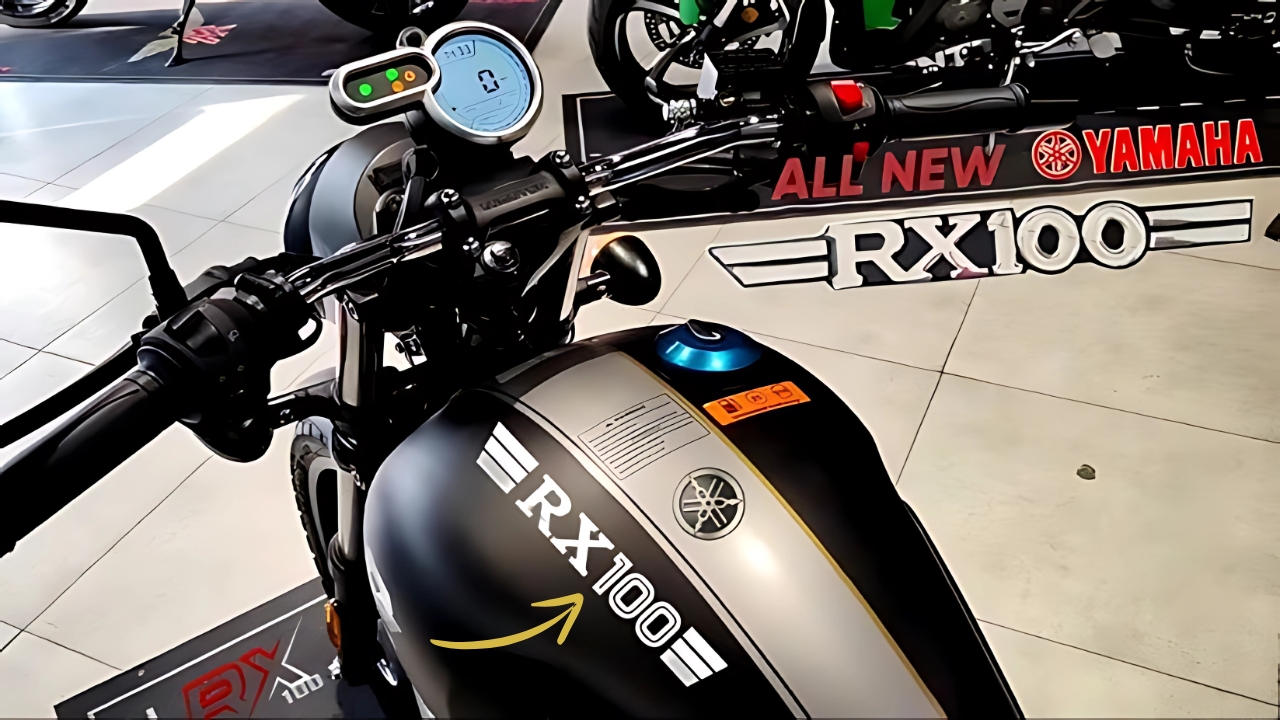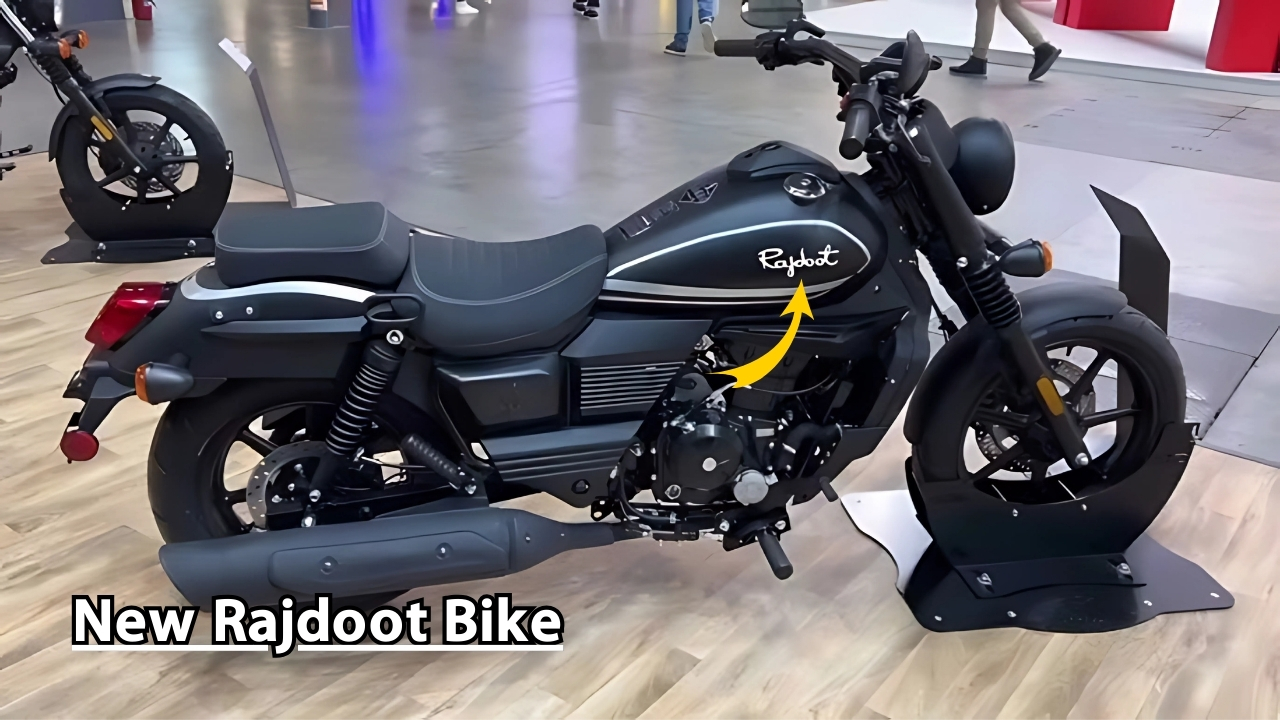In the world of Indian motorcycling, the Yamaha RX100 holds a legendary status that’s hard to match.
This compact yet mighty bike, known for its distinctive two-stroke roar, not only dominated the racing scene but also captured the admiration of many.
As rumors of a possible revival start to circulate, let’s embark on a nostalgic journey, exploring the RX100’s past and what a future version could look like.
The RX100’s tale kicked off in November 1985. At that time, Yamaha was still recovering from its disappointing sales with the Rajdoot 350 and wanted to make a significant impact.
They observed Suzuki’s AX 100 doing well and thought, “We can do better.” And indeed, they did!
The RX100 wasn’t merely a motorcycle; it represented a paradigm shift on two wheels. With its lightweight frame and spirited 98cc two-stroke engine, this little dynamo boasted a power-to-weight ratio that left many larger bikes in its wake.
It was like a featherweight fighter delivering heavyweight punches.
So, what truly brought the RX100 to life? To start, its engine was a blend of simplicity and performance.
The air-cooled, reed valve two-stroke single yielded 11.2 hp and 10.39 Nm of torque.
While these figures may not seem staggering today, during its heyday, they ignited excitement on the streets.
Yet, the RX100’s charm wasn’t merely rooted in its power output; it was in how that power was unleashed.
The bike’s light weight granted it an agility that felt like a natural extension of the rider.
Lean into a turn, and it would respond with the enthusiasm of a playful puppy.
Twist the throttle, and it surged forward, delivering acceleration that induced undeniable smiles.
However, one of the RX100’s standout features was its distinctive sound. The signature two-stroke growl echoed like music to the ears of motorcycle enthusiasts.
This sound wasn’t mere noise; it was a rallying cry for speed seekers. The roar of an RX100 racing down a street could captivate anyone around.
From 1985 to 1996, the RX100 ruled the roads, but its legacy has continued well past its production years.
Even now, well-preserved RX100s fetch significant prices in the used motorcycle market.
Spotting these bikes meticulously restored, with gleaming chrome, at vintage motorcycle events is becoming increasingly common.
But what cemented the RX100 as a cult classic? It wasn’t solely its performance or sound; it represented something more.
In an era when many considered owning a motorcycle a luxury, the RX100 was an accessible dream.
It offered speed to thrill the adrenaline junkie while being practical enough for everyday commuting.
Moreover, the RX100 became beloved by racers and modifiers alike. Its straightforward design invited customization, leading to a flourishing aftermarket modifications scene.
From enhanced exhaust systems to modified cylinders, the bike became a canvas for mechanical enthusiasts to showcase their skills.
Though the original RX100 ceased production in 1996, its essence lived on in models like the RXG and RX-Z.
However, as emissions regulations tightened and four-stroke engines gained popularity, the vibrant two-stroke era associated with the RX100 began to fade.
The Whispers of a Resurgence
In recent times, buzz has been building around the possibility of a revival of the RX100.
While Yamaha remains quiet on these rumors, the prospect has ignited a flurry of excitement within the biking community.
If the gossip holds true, a new RX100 could roll out onto the roads as early as 2025.
But what would a contemporary RX100 look like? Clearly, it won’t mirror the old two-stroke sensation due to modern emission regulations.
Instead, we can anticipate a thoroughly revamped motorcycle that pays homage to its iconic predecessor.
The upcoming RX100 will likely feature a 98cc, air-cooled, single-cylinder engine.
While it may not deliver the raw potency of the original, expectations are for it to provide a respectable 10.85 bhp and 10.39 Nm of torque.
We can expect the new model to blend retro aesthetics with modern advancements; anticipate timeless elements like a round headlamp and a gracefully curved fuel tank, complemented by contemporary features such as LED lighting and a digital dashboard.
Additionally, it may include alloy wheels and disc brakes, quite the change from the original’s wire-spoked wheels and drum brakes.
In terms of fuel efficiency, the new RX100 is expected to shine compared to its predecessor, which was notorious for its thirst.
Rumors suggest a mileage of around 40 kmpl, a commendable figure for a motorcycle that promises performance!
However, with modernization comes a price tag. While the original RX100 was a pocket-friendly option, the new version is anticipated to cost between ₹1,40,000 to ₹1,50,000.
This marks a considerable increase from the past, but remember, we are discussing a brand-new motorcycle.
The most pressing question remains whether the new RX100 can honor the legacy of its predecessor.
Can it encapsulate the same magic and appeal that endeared the original to so many?
The challenge is certainly formidable. The original RX100 wasn’t merely a motorcycle; it was a cultural landmark, teaching a generation of Indians the thrill of speed.
It inspired countless racing journeys and comfortably fit in on both racetracks and rural roads.
If the new RX100 materializes, it will step into a vastly different landscape. The market today is filled with performance-oriented commuters and beginner-friendly sports bikes.
It will also need to juggle consumer expectations for modern features alongside classic design.
But if the original RX100 has taught us anything, it’s to never underestimate a well-crafted Yamaha.
If the company manages to recapture even a fraction of the original’s allure, we could witness the rise of another legendary motorcycle.
While we anticipate official announcements from Yamaha, the RX100’s legend grows ever larger.
Original models have transformed into sought-after collectibles, treasured by those who lived through the golden era of two-stroke motorcycles in India.
Regardless of whether the new RX100 can match its predecessor, one truth is clear: the original will always occupy a cherished space in the hearts of Indian riding enthusiasts.
It symbolized more than just a bike; it was a rite of passage, a dream vehicle, and a two-wheeled key to independence.
So let’s raise a toast to the Yamaha RX100 – the little bike that accomplished greatness and may very well do so again. May its story continue, in whatever shape it embraces.
And who knows? Soon, we might once again hear that unforgettable two-stroke sound echoing through the streets, announcing the return of a true icon.






